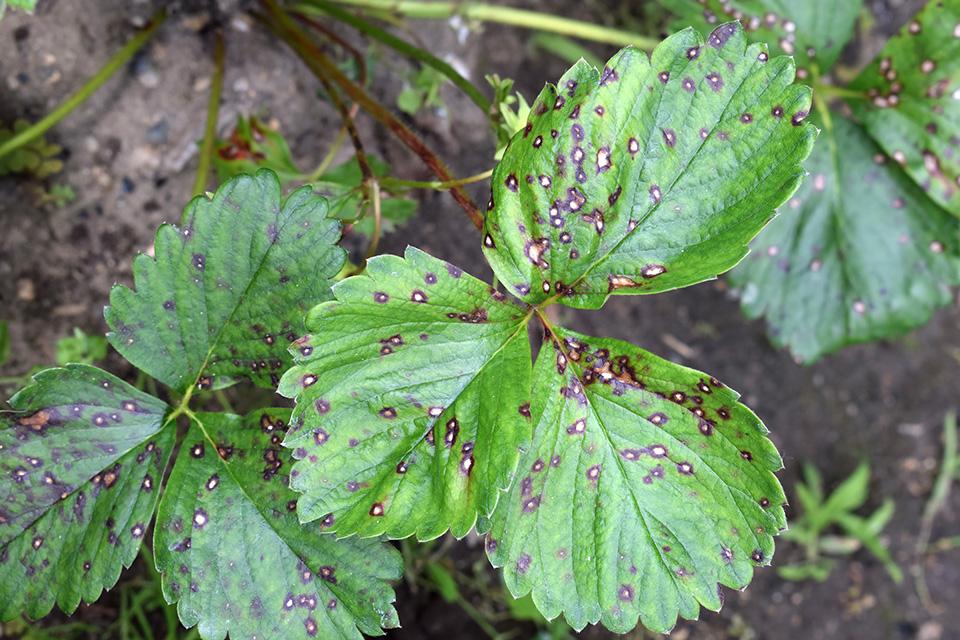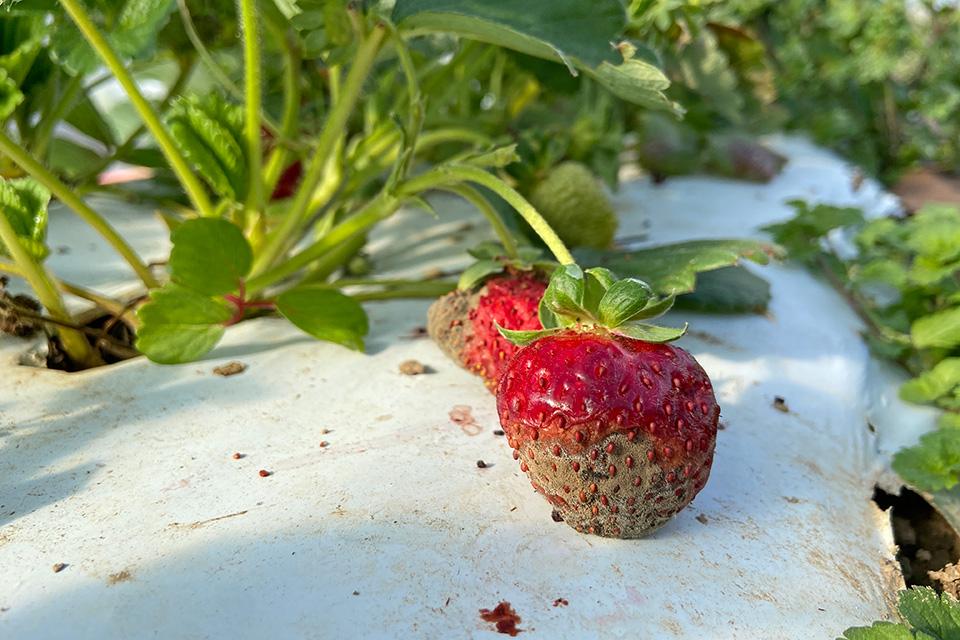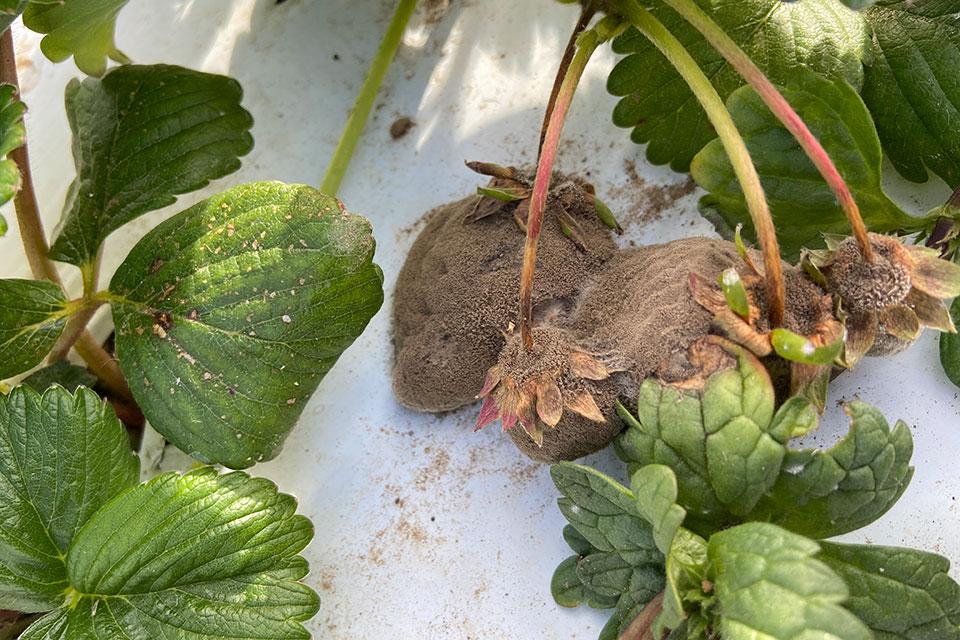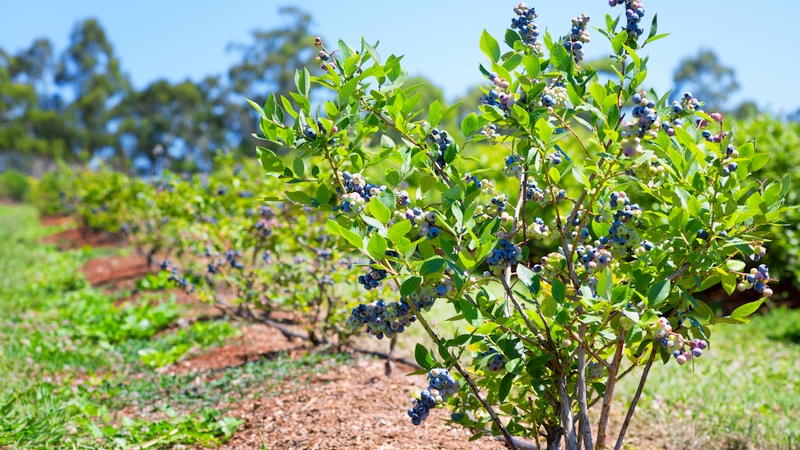Promising Research of Biopesticide Integration in Small Fruit
A number of biopesticides are getting “kind of hot and interesting” in the arena of berry/small fruit disease management, according to Cornell University Associate Professor Kerik Cox. Speaking in March at one of Cornell’s six Winter Fruit Webinars, Cox presented the results of his 2023 biopesticide trial involving day-neutral ‘Albion’ strawberries planted 12 inches apart in double rows during a cold and dry year.
Having previously conducted small fruit projects in 2021 and ’22, Cox is trying to answer the question: Could growers start using biopesticides and single-site fungicides in place of multisite protectants, such as captan, mancozeb, sulfur, and copper?
“These are the types of challenges we have,” Cox said. “We have a pantheon of leaf spots that, once they hit a certain threshold, will end up making it problematic for our berry production, particularly with strawberries. There is a lot of increased consumer and market interest for fruit that is made without multisite fungicides, and then there is interest in fruit that is produced with biopesticides.”
Although frowned upon by regulatory agencies, multisite fungicides like captan are valued for their ability to target many different genes inside a fungus that can attack small fruit crops. In turn, there is no chance for resistance.
“What is interesting is that biopesticides also have this multisite mode of action,” Cox said. “I’m wondering if we could capitalize on their activity to do the same thing to help us from getting resistance to our single-site fungicides. Could we stop that process while using biopesticides and not lose our entire crop?”
SLIP SLIDING AWAY
Several such biopesticides excelled in Cox’s 2023 trial, particularly Sil-Matrix (potassium silicate, Certis), which Cox said was consistently effective. The foliar application absorbs into the plant cuticle, where the silicon matrix acts as a physical barrier. Meanwhile, product that is not absorbed into the plant forms a layer of silicon crystals on the leaf surface to control diseases by preventing the penetration of pathogens.
“We do like the Sil-Matrix silicon product,” Cox said, analogizing its execution to the application of silicon to ball bearings and pots and pans.
“You can just envision in your mind fungal spores sliding off leaves and fruit left and right,” Cox said. “And maybe some structural fortification.”
Also performing well were a pair of not-yet-released VM Agritech brands, Curezin and Securezin, which are low metallic copper equivalent (MCE) products enhanced with zinc.
“These boost the copper’s action by applying a little bit of zinc,” Cox said. “Who knows how long we’ll have copper — it’s one of the things that is constantly under scrutiny by the EPA — but, if anything, the heavy ones will be the first to go. It’s going to be available, but this particular Curezin product is not on the market yet.”
The products are easy to mix and apply, he added, and, after multiple studies, have exhibited no apparent incompatibilities with adjuvants.
Cox and Cornell AgriTech Research Technician McKenzie Schessl addressed three diseases in their field trial: common leaf spot, anthracnose, and gray mold.

Strawberry leaf spot symptoms.
Photo: Martina-Stock.Adobe.com
COMMON LEAF SPOT
Sil-Matrix was the most effective, reducing mean incidence from 33% (untreated) to less than 5%. Nearly as effective was Securezin mixed with a high dose of sporicide.
“You really need a lot of sporicide to really get a bonus from it,” Cox said.
Also effective were Curezin, LifeGard (Bacillus mycoides isolate, Certis) alternating with Merivon (fluxapyroxad/pyraclostrobin, BASF) or Switch (cyprodinil, Syngenta), and LifeGard alone.
“You can do LifeGard. You can rotate LifeGard with Switch; it’s not that much better,” Cox said.

Anthracnose symptoms on strawberries.
Photo by Kerik Cox
ANTHRACNOSE (COOL SEASON)
Again, Sil-Matrix posted the best results, dropping mean incidence from 55% (untreated) to less than 5%.
“We’ve had some pretty good luck with it, even before this (trial),” Cox said. “It should be good for powdery mildew and other diseases as well, but we wanted to put it up against these leaf spots and fruit rots.”
Next, at 5%, was LifeGard, alternating with Merivon or Switch. Securezin mixed with lower and higher rates of sporicide reduced disease incidence to under 10%, while Curezin and LifeGard alone finished between 10% and 15%.

Gray mold symptoms on strawberry.
Photo by Kerik Cox
GRAY MOLD
All materials performed equally well against gray mold, which had an untreated mean incidence of nearly 60%.
“Gray mold seems to be the easiest to beat down with biologicals, which is pretty nice because it’s one of the pathogens that gets fungicide resistance selection very easily,” Cox said. “In this case, rotating in some of these products, like LifeGard and Sil-Matrix and maybe even low metallic copper equivalents like Curezin can do a lot of reducing.”










